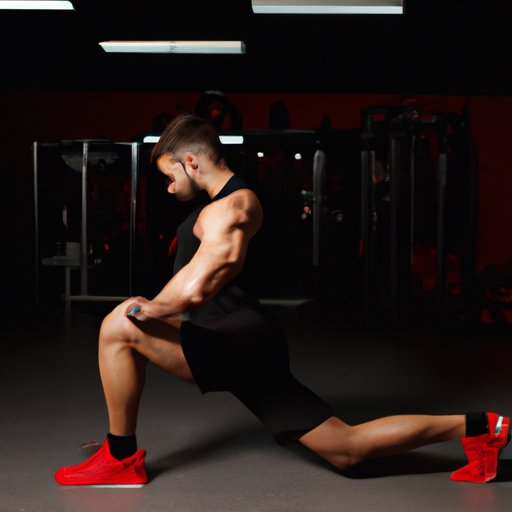
I. Introduction
Whether you are a seasoned fitness enthusiast or new to working out, understanding the 5 key components of fitness can help you achieve better health. From cardiovascular endurance to muscular strength and flexibility, each component plays a crucial role in maintaining optimal physical fitness. By incorporating exercises and activities that target each component, you can create a well-rounded fitness routine that promotes overall health and well-being.
II. 5 Key Components of Fitness – Explained
Cardiovascular Endurance
Cardiovascular endurance, also known as aerobic fitness, refers to the ability of the body to efficiently transport oxygen to the muscles during physical activity. Improved cardiovascular endurance can lead to a stronger heart, better lung function, and increased energy levels. Activities such as running, cycling, swimming, and dancing are great ways to improve cardiovascular endurance.
Muscular Strength
Muscular strength refers to the amount of force a muscle can produce in a single maximum effort. Improved muscular strength can lead to better posture, increased bone density, and improved metabolism. Resistance training exercises such as weightlifting, push-ups, and squats are great ways to improve muscular strength.
Muscular Endurance
Muscular endurance refers to the ability of a muscle or muscle group to sustain repeated contractions for an extended period of time. Improved muscular endurance can lead to improved stamina, better posture, and reduced risk of injury. Activities such as cycling, rowing, and high-intensity interval training can help improve muscular endurance.
Flexibility
Flexibility refers to the range of motion in a joint or group of joints. Improved flexibility can lead to better posture, reduced risk of injury, and increased mobility. Stretching exercises such as yoga, Pilates, and static stretching can help improve flexibility.
Body Composition
Body composition refers to the proportion of fat and muscle in the body. Maintaining a healthy body composition can lead to improved overall health and reduced risk of chronic disease. Activities such as strength training, cardiovascular exercise, and a balanced diet can help improve body composition.
III. How to Improve Your Physical Fitness
Now that you understand the 5 key components of fitness, it’s time to learn how to improve or maintain each component for optimal physical fitness.
Cardiovascular Endurance
To improve cardiovascular endurance, aim for at least 150 minutes of moderate cardiovascular exercise per week. This can include activities such as brisk walking, cycling, or swimming. You can also incorporate high-intensity interval training (HIIT) to improve cardiovascular endurance in a shorter amount of time.
Muscular Strength
To improve muscular strength, aim for two to three strength-training sessions per week, focusing on major muscle groups such as the chest, back, legs, and arms. Using weights, resistance bands, or bodyweight exercises can help you build muscular strength.
Muscular Endurance
To improve muscular endurance, incorporate activities such as cycling, rowing, or circuit training into your workout routine. Aim for two to three sessions per week, gradually increasing the duration and intensity of the exercises over time.
Flexibility
To improve flexibility, incorporate stretching exercises into your workout routine. Activities such as yoga, Pilates, or static stretching can help improve flexibility. Aim to stretch major muscle groups such as the hips, hamstrings, and back for at least 10-15 minutes per day.
Body Composition
To improve body composition, focus on a well-balanced diet that includes lean protein, fruits and vegetables, and healthy fats. Incorporate both strength training and cardiovascular exercise into your workout routine to help build muscle and burn fat.
IV. Why is it Important to Know the Components of Fitness?
Understanding the 5 key components of fitness can help you tailor your workout regimen to your needs. By focusing on each component, you can create a well-rounded workout routine that promotes overall health and well-being. Tracking progress can also help you stay motivated and see results over time.
V. The Science Behind Different Types of Exercises
Different types of exercises can have unique effects on the 5 components of fitness. Strength training can improve muscular strength and body composition, while cardiovascular exercise can improve cardiovascular endurance and body composition. Flexibility exercises can improve flexibility and reduce the risk of injury, while balance exercises can improve overall physical stability. By incorporating various types of exercises into your workout routine, you can create a holistic approach to physical fitness.
VI. Creating a Holistic Fitness Plan
Creating a well-rounded workout plan that incorporates all 5 components of fitness is essential for optimal physical fitness. To create a balanced routine, aim for at least 150 minutes of moderate cardiovascular exercise per week, two to three strength-training sessions per week, and stretching exercises and balance exercises as needed. Be sure to also prioritize rest and recovery, and seek professional guidance if needed.
VII. Conclusion
By understanding the 5 key components of fitness and incorporating exercises and activities that target each component, you can significantly improve your physical fitness and overall health and well-being. Set realistic goals, track your progress, and create a holistic workout plan that meets your needs. With dedication and consistency, you can achieve optimal physical fitness and a healthier, happier life.




